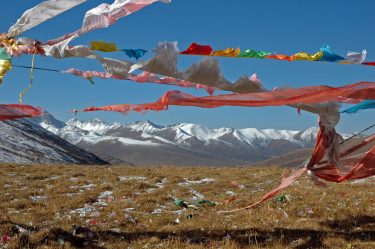
The gusting westerly winds that dominate the climate in central Asia, setting the pattern of dryness and location of central Asian deserts, have blown mostly unchanged for 42 million years.
A University of Washington geologist led a team that has discovered a surprising resilience to one of the world’s dominant weather systems. The finding could help long-term climate forecasts, since it suggests these winds are likely to persist through radical climate shifts.
“So far, the most common way we had to reconstruct past wind patterns was using climate simulations, which are less accurate when you go far back in Earth’s history,” said Alexis Licht, a UW assistant professor of Earth and space sciences who is lead author of the paper published in August in Nature Communications. “Our study is one of the first to provide geological constraints on the wind patterns in deep time.”
Read more at UW Today »
